People
GLOBAL PINOYS: The Visionary
Zee has a brief encounter with Stephen Gan, the most influential Filipino in fashion

Zee has a brief encounter with Stephen Gan, the most influential Filipino in fashion
Visionaire, V Magazine, V Man and Harper’s Bazaar are style bibles to the most discriminating and most talented luminaries in fashion. And behind these four magazine titles is a Filipino named Stephen Gan.
Born to a Filipino-Chinese family, Stephen left the Philippines to study at Parsons in New York when he was 18. After a year, he dropped out and began his career as a photographer, and soon found himself working as an editor-writer-photographer-designer at Details magazine. After four years, the then 25-year-old left the magazine to start Visionaire in 1991, and in 1999, he launched New York’s avant garde V Magazine, a fashion and lifestyle title focused on a young, sophisticated, international audience.
He joined Harper’s Bazaar as Creative Director in 2001 and six months later, the Council of Fashion Designers of America presented him with the Creative Visionary Award, the first Filipino to receive such an honor.
His talent and creativity have grown beyond the magazine industry. Stephen has art directed exhibition books for the Metropolitan Museum of Art and the Louvre, as well as photography books. He is also the director of advertising firm Dream Project, a creative powerhouse with clients such as Calvin Klein, Dior, Fendi, Shiseido, Olay Colour Europe, Tommy Hilfiger, D&G and Missoni.
I first saw Stephen in 2009 during New York Fashion Week, the first time I attended an international fashion event as a journalist. I had been told by local fashion insiders that Stephen is very difficult to approach, much more to interview. Not surprisingly, I didn’t get the chance to officially meet him until a year later, at the Hermés show during Paris Fashion Week. I was chatting with legendary editor and stylist Carine Roitfeld, (we met a week earlier in Milan during the Gucci after party), who asked me who designed my coat. When I mentioned a Filipino designer named Jan Garcia, she immediately blurted out, “So you’re Filipino? Stephan Gan is Filipino.” She called him over as he was making his way to his front row seat and I managed to introduce myself and have a brief chat, but I still was not able to nail an interview with him.
Another year later, this time in Milano, I saw Stephen entering the Ferragamo show venue and said hello. As we were exchanging pleasantries, I finally managed to mention my intent to interview him, and to my surprise he agreed, “We have ten minutes before the show. What do you want to ask?”
Melo Esguerra: You are probably the most influential Filipino in the world of fashion. Are you aware of this?
Stephen Gan: I don’t really think about it. I was born into a Chinese family in the Philippines, belonging to a second or third generation. I went to Xavier School and was taught in English, Chinese and Tagalog. I don’t know but I always felt like a bit of an outsider in Manila. You carry that feeling throughout your life and wherever I am, I just take it for granted that people look at me as a foreigner or an alien. I never tried to fit in. I just did my own thing.
ME: How did you get to where you are now?
SG: I just realized the other day that I have been in this business for 20 years, and yet there are people who still look at me and say, “There’s that new guy doing a new magazine,” but I’ve actually been doing it for quite some time.
I moved to New York when I was 18 to go to Parsons and dropped out after a year, so I started working in fashion very early and made friends along the way. I was working with Mario Testino 20 years ago, long before he became the Mario Testino that he is today. And he introduced me to a young French stylist who honestly didn’t talk to me at all the first time we worked together. I thought she was a snob but she only later admitted that she was just so shy. That’s Carine Roitfeld.
That’s what happens in life, you grow with people and you build relationships along the way as you live with passion. It doesn’t matter where you are from. I am from Manila, Mario Testino is from Peru and Carine Roitfeld is from France with Russian origins, and somehow we all get along.
ME: The fashion world is going gaga over China. Do you see this as an opportunity to go back to your Chinese roots?
SG: For me, no, it is not about going back to my roots. Let’s face it, a lot of people think Chinese influence in design is sticking chopsticks in a model’s hair while wearing a mao collar dress.
There’s a lot of other values in Asian influences other than the clichés that a lot of western designers resort to. A lot of people could be saying that we are looking at all these prints right now, and no one is saying that.
Even when I was a kid, my mom was already buying Kenzo dresses and he was at that time the king of prints. He was Japanese but his clothes didn’t look like Kimonos. They looked like Western concepts with a little bit of Eastern influence, and that was in his prints. When it is done by an Asian, it is always very subtle.
ME: Do you see the same observation in Filipino designers?
SG: I think the Filipinos are in a very precarious position. That could be seen as an advantage because we come from the most Western country in Asia. You and I are doing this interview in English. If I was being interviewed by a Chinese or Japanese reporter, we would need a translator. Filipinos always have that advantage. But I can’t see that anything truly native has come out of the Philippines in order to export to the rest of the world.
Like I said, I think you just have to sometimes forget where you’re from and just do your own thing. You can’t say I am doing a western style collection in the same way you can’t say I am doing a very Filipino collection.
You know, it is like music, a good song is a good song. Filipinos are brilliant musicians. I haven’t exactly followed all the music festivals since I was a kid but I remember the Filipinos would always win. I grew up with the generation that watched singers like Lea Salonga and that was it for me. I didn’t know anything more than that because I left but you know, when you think of her and her music, do you think of it as necessarily being Filipino? I don’t. It’s just that she has a good voice.
ME: Will there ever be Visionaire, V Magazine or V Man edition in the Philippines?
SG: I hope so, but I have to find a local partner or publisher. These days, it is so hard to work on a foreign edition if you don’t work with a publisher that you can really trust. One day.
ME: You know what I really want to do one day is to curate an exhibition about you in the Philippines.
SG: Oh I would love that. Let’s do that!
ME: Okay, that’s it. I guess we have to go to our seats now. The show is about to start. Thank you Stephen.
SG: Thank you Melo. See you again soon.
- by Melo Esguerra
People
A Destination Wedding in Capiz; A Love Story in Focus
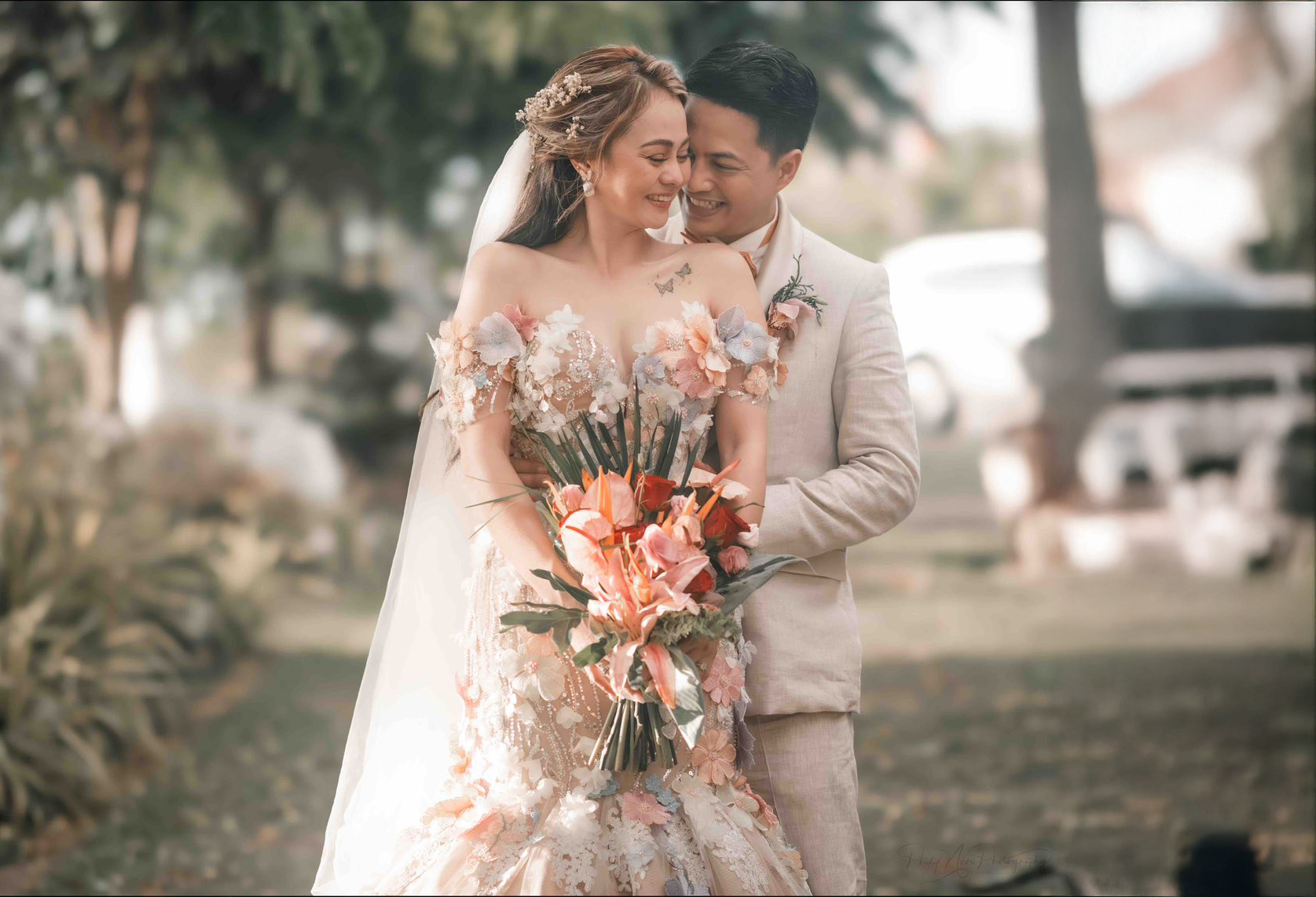
by Oj Hofer | photography by Pat Dy | styling by Romero Vergara | bridal gown & groom’s tuxedo by Oj Hofer
As June draws to a close—a month filled with vows, veils, and wedding bliss—it’s only fitting to end with a love story that began not in a chapel, but behind the lens of a camera. Meet the groom, Phillip Novo: a seasoned maritime officer commanding international vessels by profession, and a passionate hobbyist photographer in his downtime. Mr. Novo has captured countless scenes from around the world, but nothing compares to his candid portraiture study of the woman he would soon marry—Mitch Alianza—in a heartfelt ceremony at the Sacred Heart of Jesus in Roxas City, Capiz.
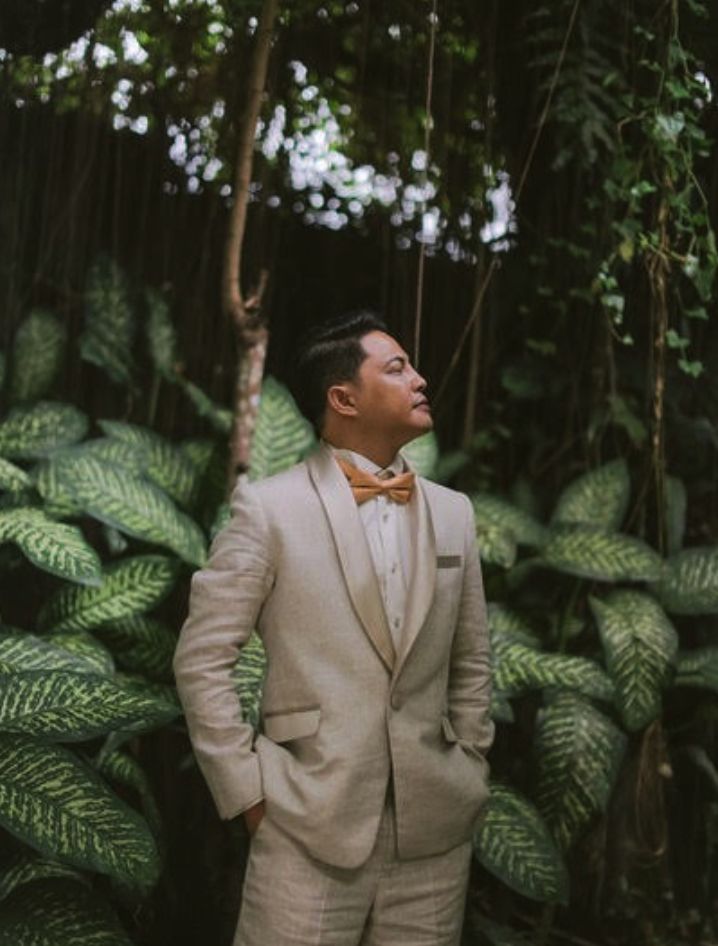
Philip keeps it classic in sun-washed Seychelles beige linen.
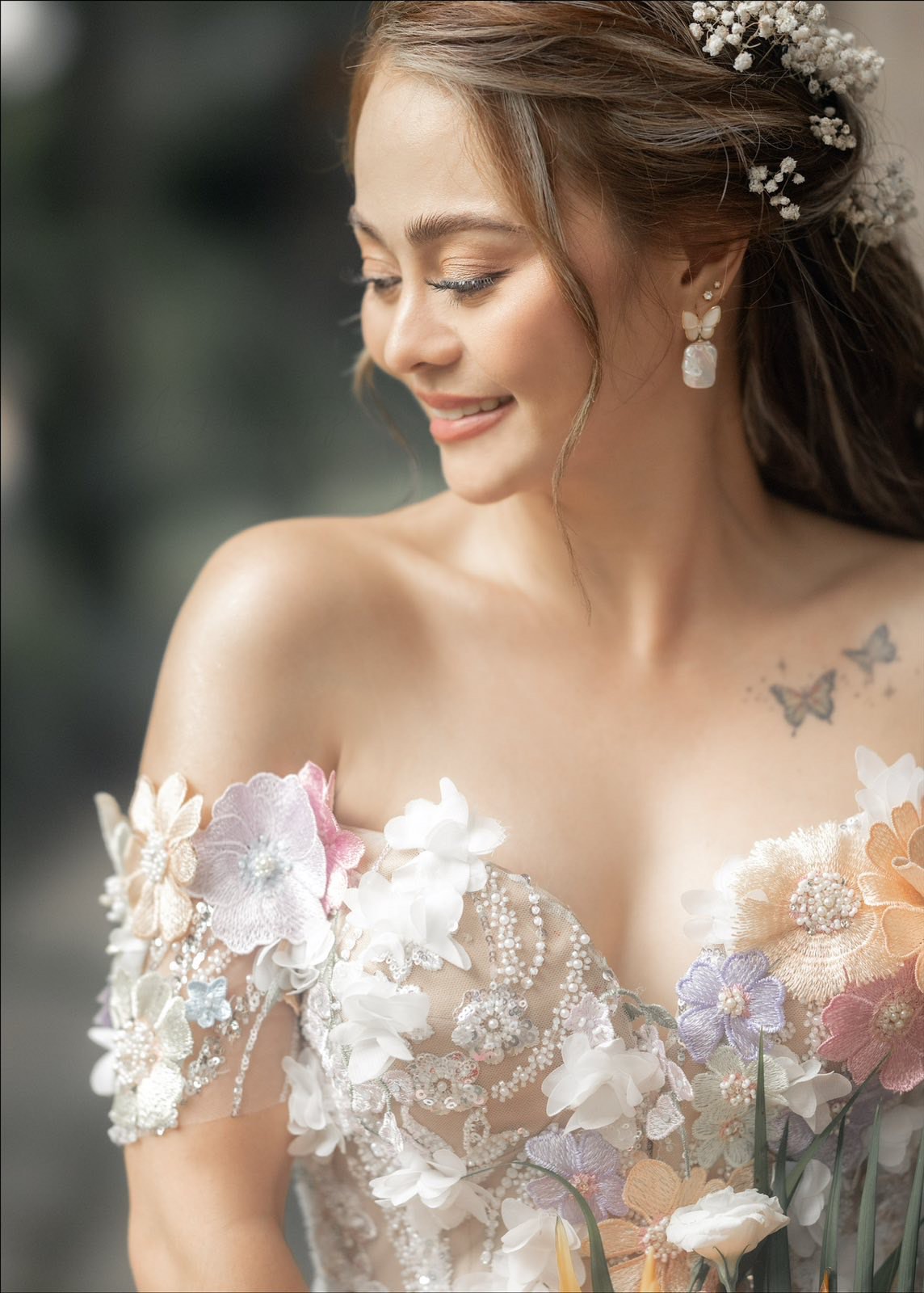
Mitch channels Persephone in a gown that blossoms with spring’s charm
Capiz became the couple’s destination of choice as an homage to the bride, who hails from the province. Historically, Capiz was the second Spanish settlement established in the Philippines. With its 80-kilometer coastline and a mesmerizing stretch of rivers and swamplands, the province offered a natural allure to the wedding party. Yet for the groom, it was more than scenery—it was about honoring his bride’s heritage and heart.
Their love story spans continents, email inboxes, and a few overpacked pieces of luggage. Phillip recalls their serendipitous encounter involving jumpsuits, hot air balloons, and the rhythm of a life lived in sync.

The Sacred Heart Shrine in Capiz, transformed into a lush tropical dreamscape.
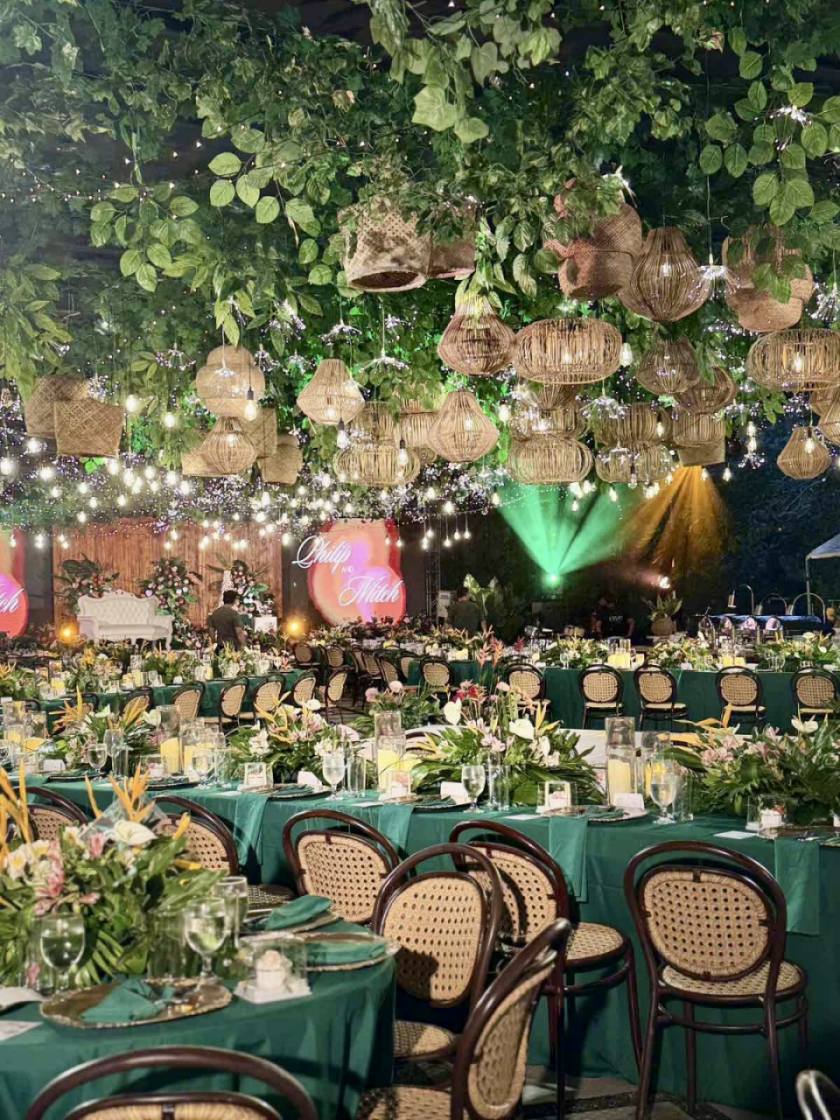
Wicker baskets, solihiya chairs, and cascading greens brought understated elegance to the naturalistic reception at Istorya Forest Garden.
How did you meet Mitch?
Right after covering a friend’s wedding. I spotted her navigating the space with this quiet confidence. We didn’t even speak—just exchanged a look. Later came a few messages, a first date, and her walking toward me in a black jumpsuit. That moment? Unforgettable. I thought, “Ka-Vogue!”
When did you know she was the one?
Honestly, from the start. I had just closed a big chapter of my life—career goals, family responsibilities—and when I held her hand for the first time, I didn’t want to let go. Everything just aligned.
You proposed in Turkey—why there?
Cappadocia. Picture it: fairy chimneys, floating hot air balloons, and this surreal landscape. It felt like a dream, and in that dream, I asked her to marry me.
Who plans your trips—beach bum or mountain guy?
I map out the adventures, and Mitch plans what we wear on them. She packs only what fits and flatters—and trust me, she always looks like she stepped out of a fashion editorial. Our luggage deserves its own Instagram.
If you had 10,000 lives, would you marry her each time?
Every single time. Even if we met in another galaxy.
What’s one quirky thing you love about her?
She’s endlessly resourceful. Whether it’s an outfit or a life goal, Mitch can pull it together like no one else. She’s sharp, creative, and once she sets her mind on something, there’s no stopping her.
What’s your message to Mitch as you set off on this next big adventure together?
Hi, Love—keep holding my hand. No matter how the winds blow, let’s keep making memories, telling stories, and seeing the world—together.

A Sky Full of Balloons, a Heart Full of Yes — Philip Proposes to Mitch in Magical Cappadocia
People
The Cardinals–an Amazing Gallery of Portraits on Cardinals in the Philippines by Artist Jun Impas

by Jing Ramos
With the recent death of Pope Francis on April 21, the Catholic Church is now focused on the election of the new Pontiff. The succeeding Pope will be challenged with continuing Pope Francis’ appointments and reforms, which leaned heavily on social justice and environmental issues.
According to the Code of Canon Law, the two most important functions of a Cardinal are to advise the Pope on matters of Church governance and global issues, and most importantly, to assume a vital role in electing a new Pope when the Holy See (Sede Vacante) is vacant.
In 6th-century Rome, the first individuals known as Cardinals were the deacons of the seven regions of the city. Since then, Cardinals have become a privileged group among the Roman clergy. It wasn’t until the 11th century that Cardinals were officially granted the right to elect a Pope. They were given the honor of wearing a red hat, which soon became their symbol. Often referred to as “Princes of the Church,” Cardinals wear distinctive red attire and are addressed as “Eminence,” a title that conveys dignity and respect.
Currently, one of the most favored contenders to continue Pope Francis’ progressive agenda is Cardinal Luis Tagle. He brings significant experience as the Pro-Prefect for the Section of the First Dicastery. Also serving as President of the Interdicasterial Commission for Consecrated Religious, Cardinal Tagle is the Grand Chancellor of the Pontifical Urbaniana University. Beyond his titles, he is widely known in the Vatican as a trusted figure within Pope Francis’ core group.

Cardinal Luis Tagle and artist Jun Impas
Jun Impas, a highly respected Cebuano visual artist known for his realistic paintings, shares his gallery of Filipino Cardinals. The artist’s accurate and detailed depictions capture not only the physical likeness but also the presence of his subjects. “As a realistic painter, my works revolve around human figures, religion, significant cultural events, and quintessential Filipino scenes. I believe in the beauty of the ordinary, and that the most touching and telling of any story is better felt when captured in infinite duration, as in a realism painting,” the artist concludes.
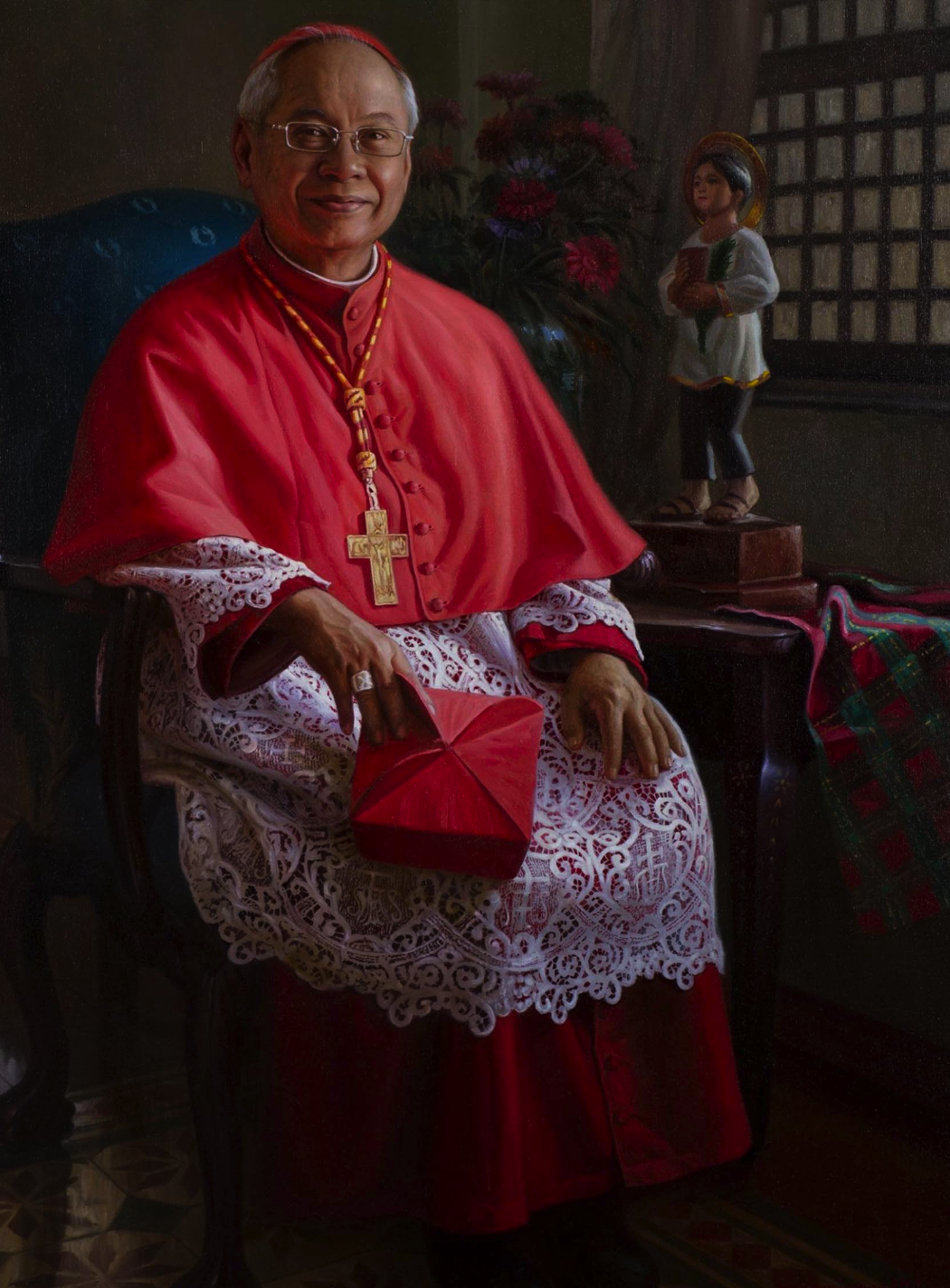
Cardinal Orlando Quevedo
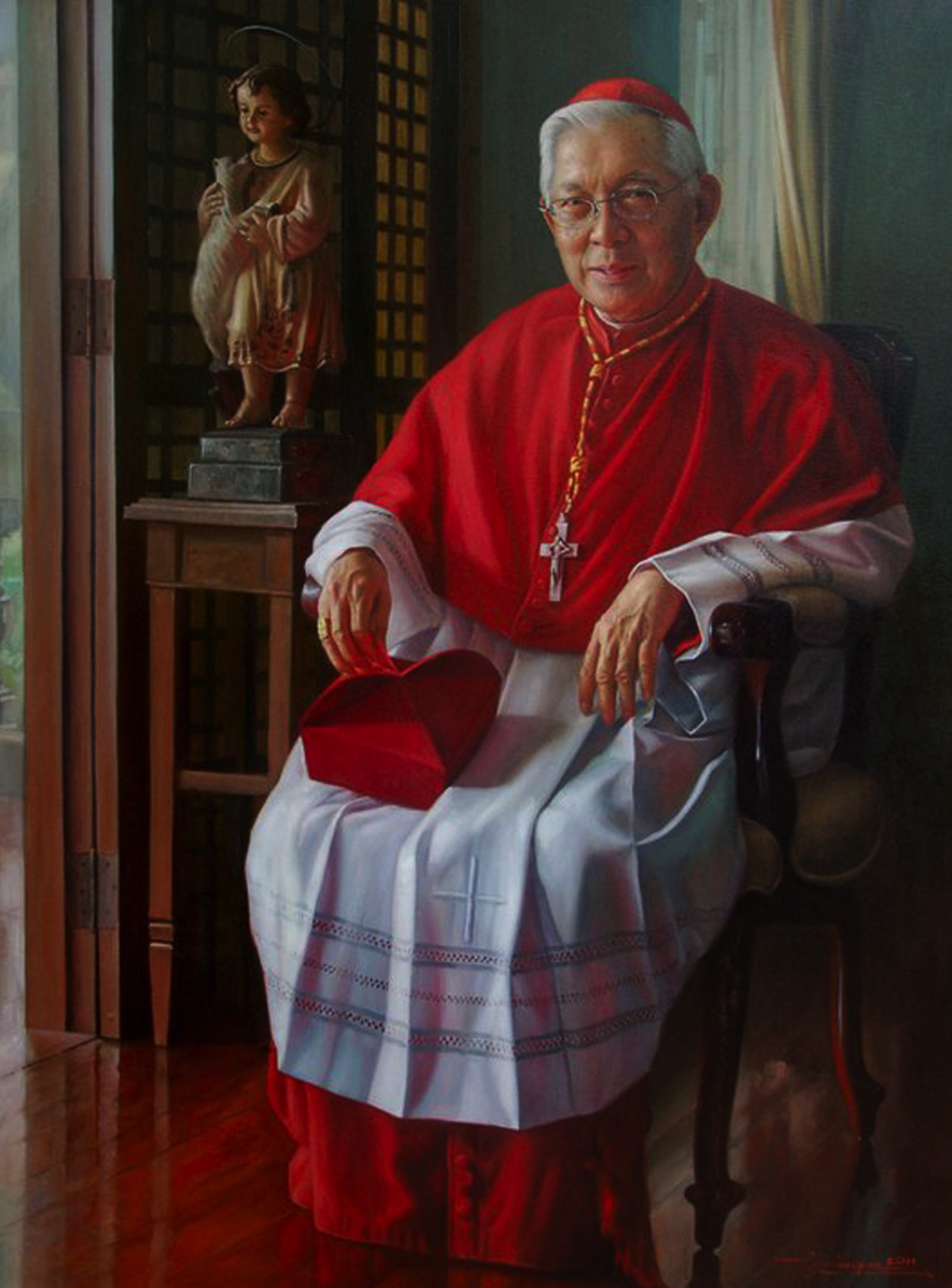
Cardinal Archbishop Emeritus of Manila Gaudencio Borbon Cardinal Rosales
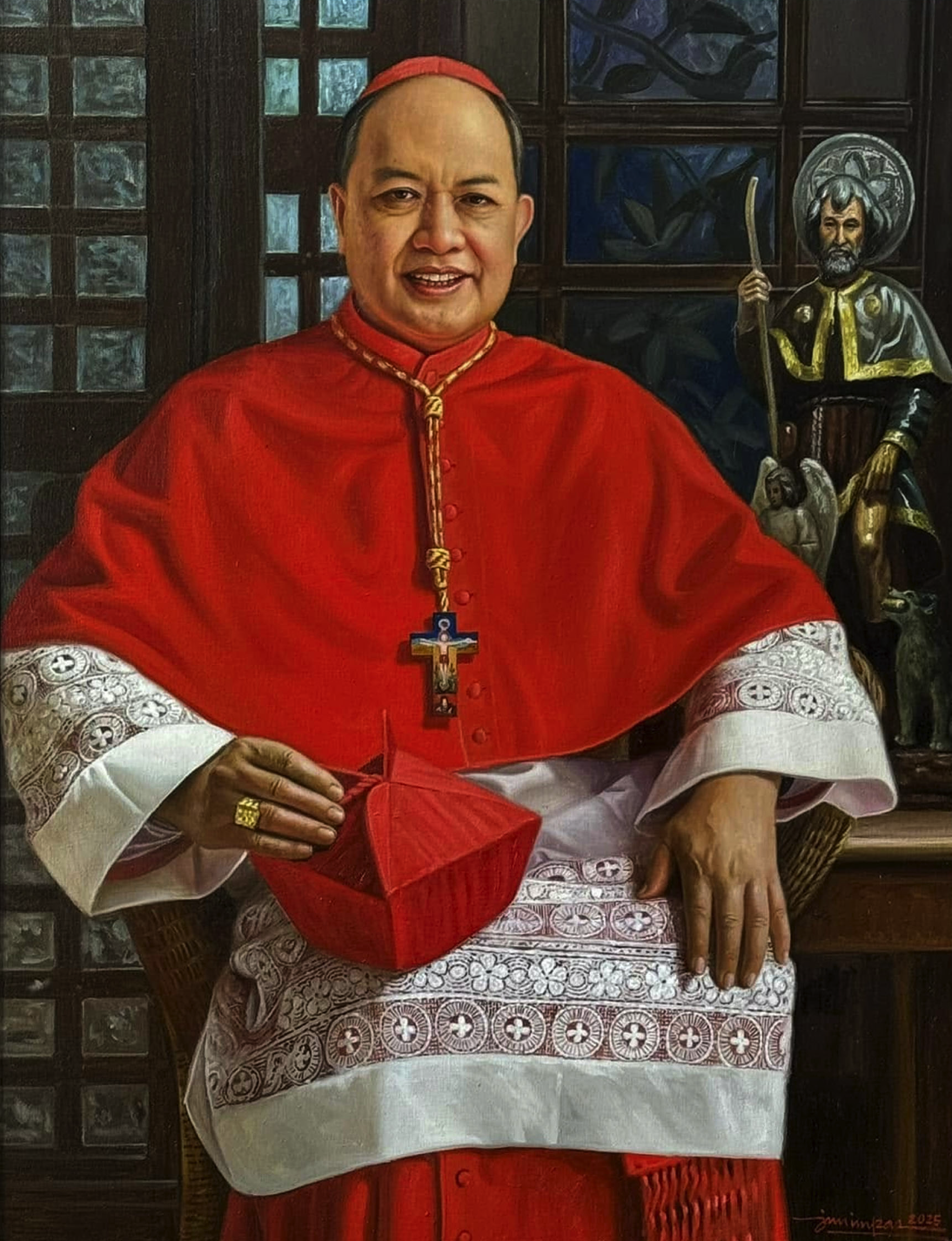
His Eminence Pablo Virgilio David, Cardinal Bishop of Caloocan
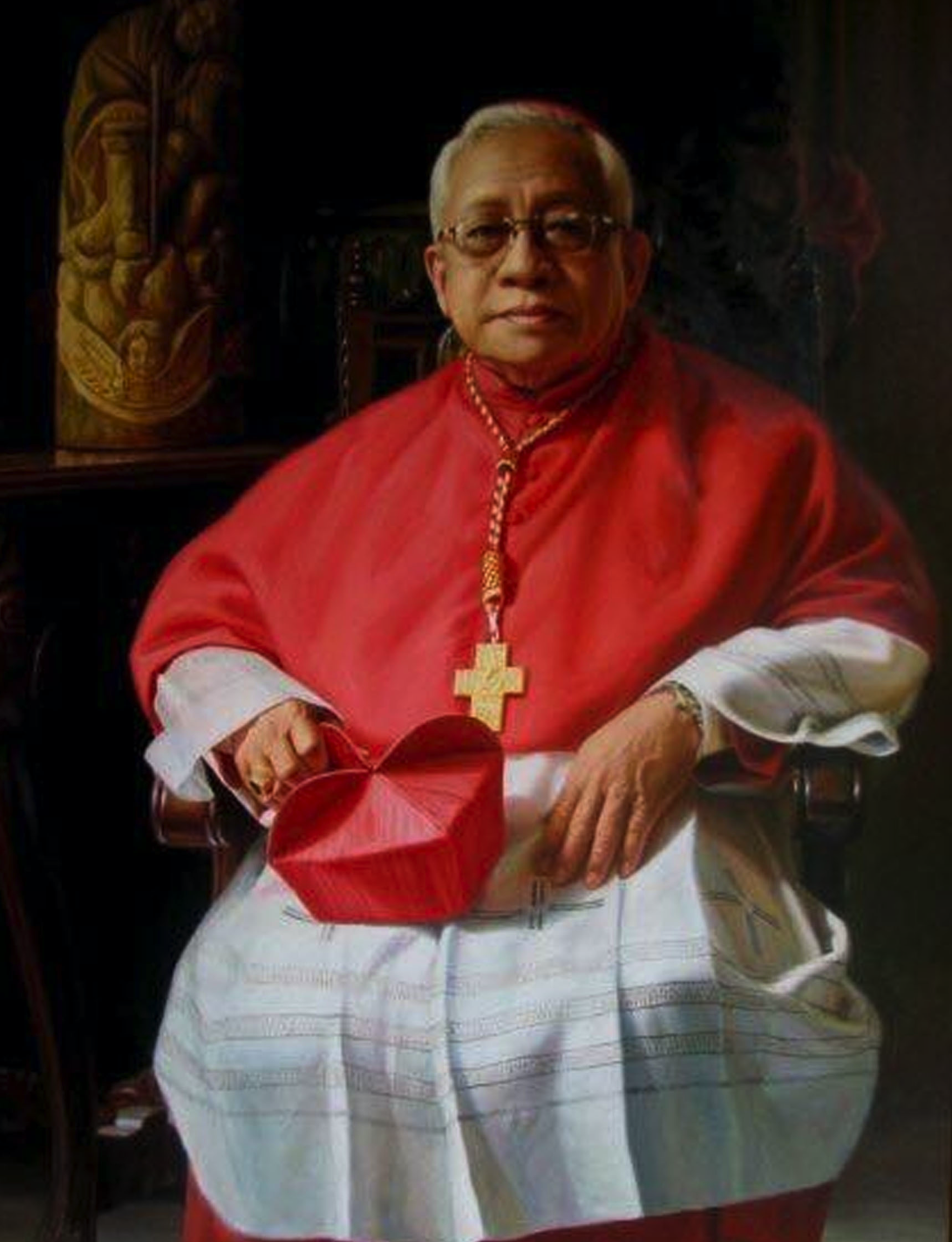
His Eminence Ricardo J. Vidal, Cardinal Archbishop of Cebu
Events
The First NUSTAR BALL
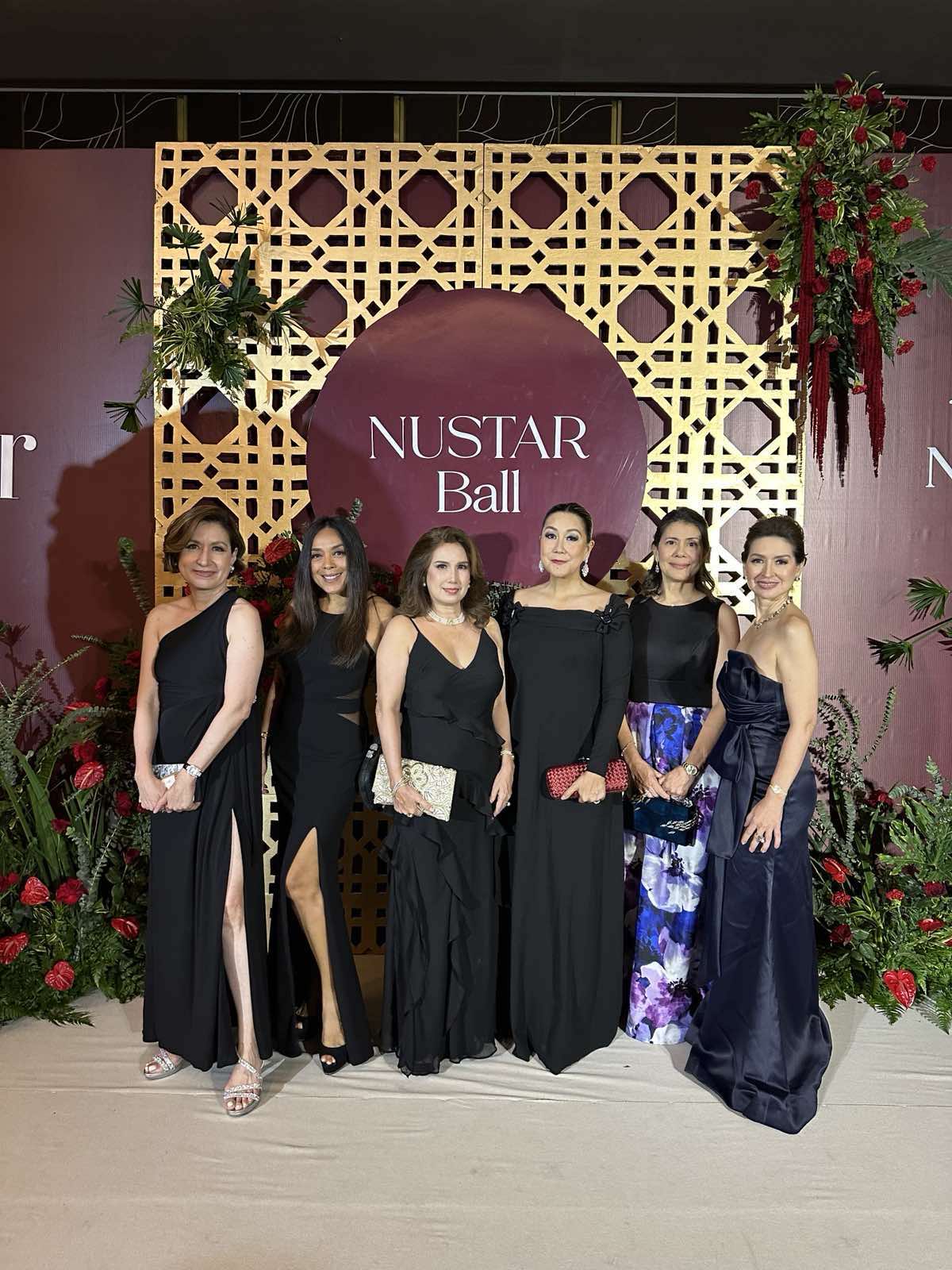
The NUSTAR Ballroom, a magnificent venue at the NUSTAR Resort and Casino in Cebu, sets the stage for last night’s first-ever NUSTAR Ball.

Black was the color of night at the Zee table.
Glamorous guests from Manila and Cebu converged at the NUSTAR Ballroom, an exquisite venue within the NUSTAR Resort and Casino in Cebu. The evening unfolded with a seated 5-course dinner. The opulent feast started with Beetroot Salmon Gravlax, adorned with caper berries, caviar, set with delicate edible flowers; and a main course of Compressed Pork Belly with Crackling Skin and Baby Scallops. Another highlight was the auction of coveted items like Dior and YSL handbags, a limited-edition Bulgari watch, and an exclusive 2-night stay in Nustar’s opulent 3-bedroom villa—complete with a private pool and a dedicated butler. The charity evening benefited the Cameleon Association, an NGO based in Iloilo City created in 1997 that developed a global approach to act on the causes and effects of sexual violence against children.

Nora Sol, Beth Go, Frances Siao and Marylou Ong

Ina Ronquillo, Maryanne Aboitiz and Jackie Lotzof

Designers Jun Escario and Philip Rodriguez

Philip Rodriguez with NUSTAR Malls two power ladies: May Adolfo and Joanna Salazar

Lana Osmeña with Mariquita Yeung

PJ Castillo and Kaye Abad with Cary Santiago

Drew Sarmiento with LV Manager Adrian Decuigan

Cary Santiago with Eva Gullas

Manila socialites Julie Boschi and Ching Cruz with June Alegrado
It was a night of elegance, luxury, and unforgettable memories as ladies in long gowns and gentlemen in black ties danced the night away.
-
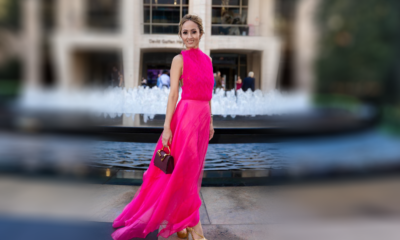
 Style2 months ago
Style2 months agoHappy Melendres Traipsing Around Manhattan in Non-Stop Armani
-

 Arts & Culture3 months ago
Arts & Culture3 months agoKultura. Kapital. Kasalukuyan: Art that Speaks of Today
-
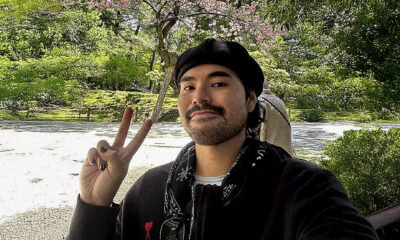
 Prime Target2 months ago
Prime Target2 months agoMiko Sarmiento: Turning Silk Scarves Into Works of Art
-
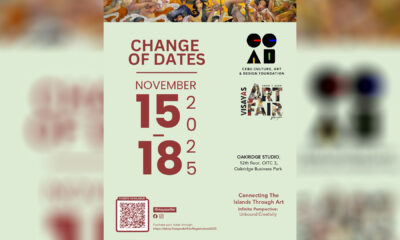
 Arts & Culture1 month ago
Arts & Culture1 month agoVisayas Art Fair Year 5: Infinite Perspectives, Unbound Creativity
-
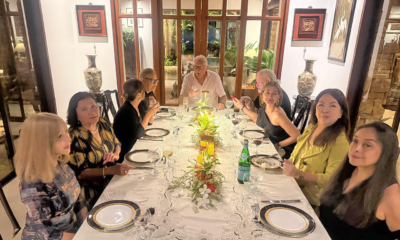
 The Scene3 months ago
The Scene3 months agoAnother Elegant Dinner at Chez Marguerite
-

 Prime Target3 months ago
Prime Target3 months agoLuna Vdl–Endless Summers in Siargao
-

 The Scene3 months ago
The Scene3 months agoA Stylish Soirée: Cebu’s Elite Celebrate Jackie Deen Lotzoff at Mad Thai
-

 QuickFx2 months ago
QuickFx2 months agoI Lost It at the Movies: Five of the Most Significant Films of the 1960s






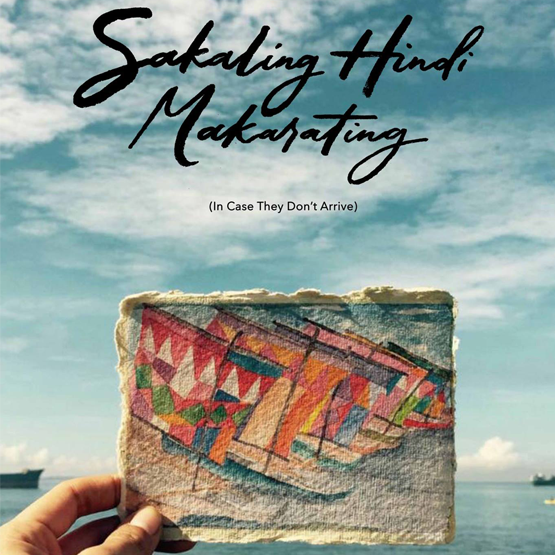




You must be logged in to post a comment Login